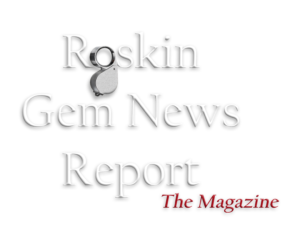Stone Group Laboratories
Cara & Bear Williams
Findings from Stone Group Laboratories shows the blue/white fluorescence in diamond can only be natural in origin.
Many gemstones fluoresce various colors depending on the elements or vacancies within.
Diamond Fluorescence can tell you a lot. Look at these two images. Image #1 shows the violet Sri Lankan sapphire and diamond ring in typical daylight. Image #2 shows the ring under Long Wave Ultraviolet (LWUV).

When you see that immediate blue/white fluorescence reaction in diamonds when using Long Wave Ultra Violet light, you can be confident that you are seeing a natural (earth mined) Type IaA diamond.
Please know that this information only applies if the blue-white fluorescence is present. Not having this fluorescence to LWUV does not prove anything. Not all natural diamonds show visible blue-white fluorescence, so be careful not to judge non-fluorescing diamonds as lab grown.

That blue white fluorescence is caused by aggregated nitrogen in what is referred to as the N3″‘s.
The graph below is a UV-visible spectrometer readout.
The main peak at the left is the 370nm energy produced by a long wave UV LED.
Resulting peaks to its right are the N3s fluorescing and returning that blue-white light back to you.
MAIN POINT: N3s take millions of years to form in natural diamonds. They cannot be reproduced in Lab Grown Diamond.














